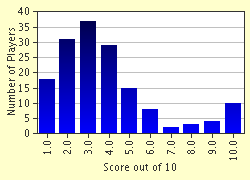Quiz Answer Key and Fun Facts
1. Which Scandinavian country has the most runestones by far?
2. Why is there such an amount of different spellings on the runestones?
3. There is often a depiction of an animal on the runestones. It has an elongated nose, drop-shaped eyes, and a long "tail" at the back of the head. The runes are written inside its thin, wriggling body. What exactly is it supposed to be ?
4. Some Runestones are carved with jibberish that has no meaning at all.
5. People used to destroy/move the runestones and use them as building-material. What kind of constructions did they often wind up as part of?
6. The oldest known runic inscriptions are thought to be from around....
7. Swedish vikings laid the foundation to the country we now know as Russia. How many Russian runestones have been discovered so far ?
8. What is so remarkable about the Kensington Runestone ?
9. There are in fact some contemporary books and magazines that consist of runes alone.
10. Man began using runes to invoke the gods and/or cast spells by scratching them on to highly prized possessions, or carving them into rocks. The most famous and well known inscriptions date back to the Scandinavian viking-era. But when was one of the last authentic inscriptions made?
Source: Author
Beowulf2
This quiz was reviewed by FunTrivia editor
fringe before going online.
Any errors found in FunTrivia content are routinely corrected through our feedback system.


